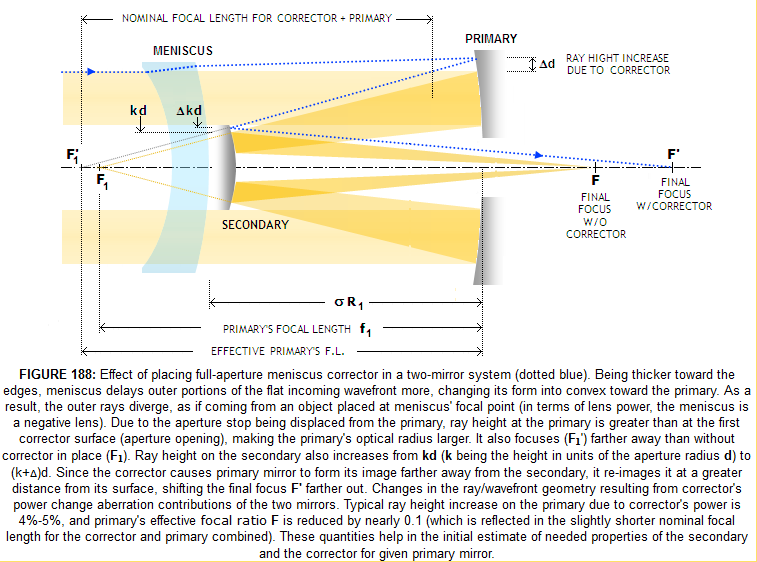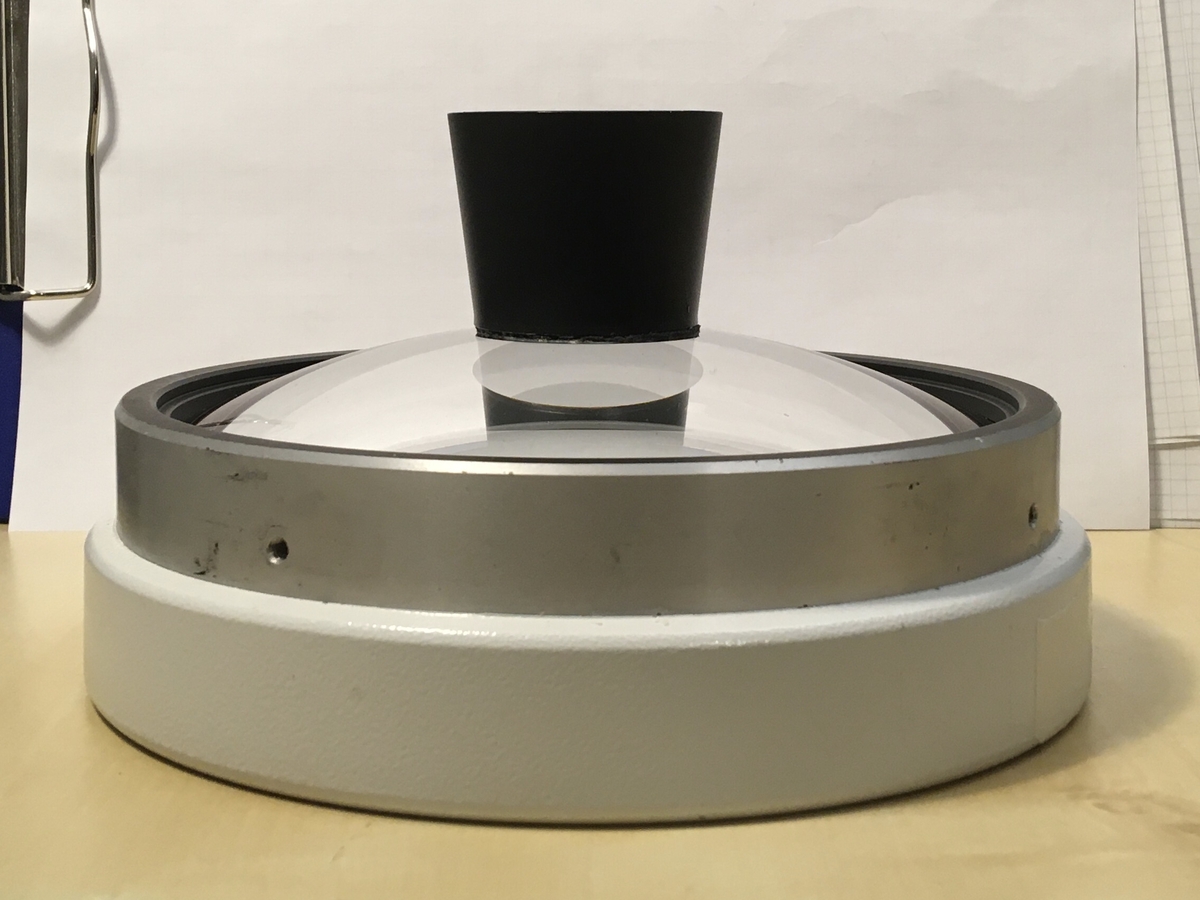-
Posts
1,168 -
Joined
-
Last visited
-
Days Won
1
Content Type
Profiles
Forums
Gallery
Events
Blogs
Posts posted by Robindonne
-
-
Yes. Its to dim a full/bright moon for example. Most caps ive seen also have a bulb next to it. To house the removable small cap
-
2 hours ago, Roy Foreman said:
Just measured mine. It is 620mm from the balance point to the tip of the camera - ZWO 6200MC Pro full frame, which is a large camera. Cables will obviously require another 75mm or so depending on how you route them, and in use you will almost certainly require a dew shield as well.
Attached a photo just in case it helps.
According to Celestron, it takes 55 lbs of weight to break the corrector plate - a figure I find very hard to believe !
They performed a test on the c14. Testing looks easy enough to try it yourself.
Are the 90 angle connectors an option when you’re too long?
-
 1
1
-
-
people are getting more and more creative with old fire extinguishers
-
 1
1
-
-
It was a close race with the other contender. The astromaster 130eq
-
 1
1
-
 1
1
-
-
Interesting read. But dont we have to admit that this isnt really debatable, or very debatable but open ended. So many theories where we just have to stick to the most accepted one. Dont mean to hurt every well explaining individual, on the contrary, I love any detailed explanation, but I can't stop myself from realizing after every explanation I read that I've read a possibility and not a fact. I sincerely hope we never find out and that we are all wrong for the reason the universe will be explored forever.
Dont let it give away its biggest secret please🙏🏼. -
Wait for a pro-answer, but what I remember from my own c8/reducer/dslr setup, some Celestron reducers dont require the 105-110 backfocus, its mentioned in the description of that reducer. And the eventually needed extension could be useful filled with an oag. Mine was 35 mm thick, and a normal thickness eos t-ring made me reach the required backfocus with some small extension rings.
-
Very useful thread! Thanks for that.
While reading about the “not so small as described” central obstruction, one question came to my mind.
When you overlap these two pictures, isnt the baffle way to wide manufactured? And probably give you more aperture when that thing is removed or replaced for a less conical one? It looks like they made the angle a 90 degree on the meniscus while the actual angle the light follows inside the tube is way less than 90 degrees.
-
Hello Magnus. Was just carefully reading all the text again from your reversed engineering post (for the third time😅). I didn’t find it documented indeed.
4 minutes ago, Captain Magenta said:The thing you should take care of, if you are concerned, is to ensure the central reflective spot goes back in properly centred.
This one is something to pay extra attention to when i remove the retaining ring. Thanks.
It does have some cork between that retaining ring and the glass, but i wasnt sure if these pieces of cork were part of an alignment or just to have a soft connection between the ring and the glass. And the way the glass (and so the reflective center) is centered will be visible when i remove that retaining ring.
Yes i’ll post some pictures when all is finished, or maybe during this work when im stuck😬.
thanks for replying and thanks for your initial reversed engineering post. Threads like that are forever helpful.
-
 1
1
-
-
1 minute ago, Avocette said:
Take a look at the thread from @Captain Magenta about reverse engineering his Maksutov-Cassegrain (SkyMax 180).
Yes thanks. I read it twice but i dont remember the removal of the glass was mentioned. But ill go over it again. I might have missed it. Thanks again
-
 1
1
-
-
my right knee hurts so much that i decided to remo…
No actually a question about a maksutuv.I kind of understand that the optics of a refractor cant be removed from its cell without the need of precise aligning/adjusting afterwards. But how does this work with the meniscus of a Maksutov? I need to remove the meniscus for some maintenance. I can carefully try to mark both items if necessary. I think, not sure, that the secondary is collimatible but the meniscus cant be adjusted once its mounted.
Is it safe when done carefully? Or is it always needed to send it afterwards to a professional for alligning? -
I go partially with Knighty2112. We just dont know. And maybe thats the most exciting part🙂
-
I think the c5 is pretty good capable to do the job. Did you follow all the instructions to align the mount?
When finished with the alignment you should be able to select a planet and slew to it. When nothing is visible in your eyepiece you might have to start with your 25 mm to check how far off the planet is from the center or your eyepiece, correct the mount until its centered in the 25 mm and swap that 25 for the 12 mm and check again if the planet is centered. The shorter the focallength of the eyepiece, the smaller the area you see through that eyepiece. The 8 mm will probably give the best view on planets but when the telescope is not perfectly aligned, your telescope is aiming on an “empty” part of the sky. Try to align the best you can at the start and adjust as much as you can to center the objects in the eyepiece.
Oh and dont forget to remove that big black cap on the front😉 -
You would say the more the better, but 3 is like a magic number to maintain stability whenever the ground gives away.
Cant you reinforce the construction between the 3 “magic” points? Maybe remove the 3 legs and add a strong triangle shaped construction to the bottom, and mount the 3 legs under the triangle construction. 1000% that when one of the outer legs gets some clearance, you end up with a seesaw when all the weight moves to that leg. -
14 minutes ago, Padraic M said:
So have you decided what you're going to buy with the 500 quid you saved?
Some cabinets for the van😀
-
 4
4
-
-
What about a used peli case? Although your dimensions are very rare, if you find one, you have a case that will survive everything
-
How its explained to me on other machines using steppermotors is that its better to have too much voltage running through the drivers. They wont allow to send more than needed to the motors. A lower voltage can cause the motors to not work as they should and probably slow down, mis steps, get noisy and maybe even get damaged.
-
1 hour ago, Pixies said:
Ah yes i didnt know its name. But that part looks kind of matte black already. I might just leave it like it is. Thanks for the lesson about this part🙏🏼
-
2 hours ago, dweller25 said:
Your welcome.
If you can store it in a cool place it will be a big advantage.
Even with the fans they are difficult to cool down during the evening.
I will thanks. Havent used it yet. As long as its ready coming months its fine by me. I will store it outside like you said and hope to be amazed.
-
11 minutes ago, dweller25 said:
I used to have an OMC200, it had a baffle in the middle of the primary and another baffle surrounding the secondary.
It had no circular baffles around the OTA tube wall.
The primary baffle is very long so the scope does not need flocking at all.
Hope that helps.
Ah ok. Indeed it has both like you described. Didnt know they were called also baffles. Yes thats very helpful info. Thx
-
The previous omc200. Where the tube is made of one piece. Im not sure if it should have a baffle/ring in it original. -
Okay. So you mean using that black fabric? And with baffle tube you mean a tube that already has baffles installed? Because mine is completely straight. Not a single baffle to see. Or is baffle tube just another name for the tube?
-
I recently bought a used telescope that showed a bit too much signs of use. Not on the optical parts, just the tube, front and back elements. No scratches but missing parts of the paint. So i took it apart completely to have it powdercoated. The one thing im not sure about is the inside of the tube. It has a black/grey coating which is quite in good shape and which i didnt plan to replace or cover with something else. But ended up having the complete telescope disassembled, i maybe spend some time on the inside.
Would it be safe to flock with fabric? Not sure if it soak moisture more than in an open tube design. Or add a baffle and leave the original coating? -
10 minutes ago, johninderby said:
The specs on the TS website give the glass used as FPL51 for the TS 115 TRIPLET.
Oh that i didnt know.
-
34 minutes ago, John said:
Good luck with that

No but serious. If there’s a final answer on his 3 scope question, i would love to know it.
Although i dont think any of the 3 will give a huge improvement over a good 120ed, (plus a mewlon 180), i had to base my opinion on the shared experiences by the ones that actually used at least 2 of the 3 mentioned options. But also a bit on the op’s reason behind this question. What i made of it is he owns a mewlon for planetary/solar-imaging but decided to swap the mewlon for a refractor for planetary, and i perhaps accidentally assumed also solarimaging based on the op’s videos and photos. All combined would make it for me the (fpl-53) 115 triplet as the best addition to that famous hard to beat 120ed.














ZWO EAF hand controller - request for someone to open theirs up and tell us whats inside
in Discussions - Mounts
Posted · Edited by Robindonne
I dont use this focuser but i once read this.
Maybe here some info?
Someone mentioned:
So to sum it up, here's what I confirmed:
tip+ring1=up
tip+ring2=down
tip+sleeve=fast